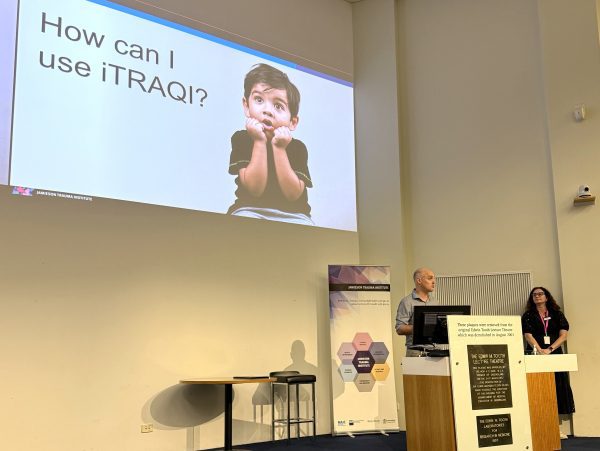Injury Treatment and Rehabilitation Accessibility Queensland Index (iTRAQI)

Adam Rolley and Jacelle Warren present iTRAQI.
With the successful completion of their Regional, Rural and Remote Trauma Care grant from the Emergency Medicine Foundation and the Motor Accident Insurance Commission, the team presented the development and validation of the iTRAQI tool to the audience.
Purpose of iTRAQI: iTRAQI was developed to address the unique challenges of trauma care in Queensland, a state characterized by its vast and decentralized geography. The primary goal of iTRAQI is to provide a comprehensive understanding of the current state of trauma care access, particularly focusing on the time it takes for critically injured patients to reach the necessary medical facilities.
Challenges in Trauma Care: Queensland’s large and remote areas pose significant challenges for timely trauma care. Traditional indices like ARIA+ and the Modified Monash Model, which are commonly used by government departments, do not adequately reflect the realities of Queensland’s trauma system. These models often rely solely on road distances, which may not be the most effective means of transport for critically injured patients.
Development of iTRAQI: iTRAQI was designed to incorporate all prehospital transport options, including air and road, to provide a more accurate representation of real-world pathways to care. The development process involved gathering the best estimates from experts to ensure the tool accurately mimics the actual transport times and pathways used in Queensland.
Pilot and Validation: To manage the complexity of this task, the initial focus was on pathways to care for moderate to severe traumatic brain injury (TBI) patients. The iTRAQI methodology was piloted and validated using a cohort of TBI patients injured in road traffic crashes. This approach allowed the team to refine the tool and ensure its effectiveness in improving trauma care access.
Conclusion: iTRAQI represents a significant advancement in understanding and improving trauma care in Queensland. By accurately reflecting the real-world transport options and times, it provides valuable insights for those planning and working within the trauma system, ultimately aiming to reduce mortality and long-term complications from injuries.
Further Information: For more detailed insights, click here to access the full technical report. You can also explore iTRAQI on an interactive map here.
